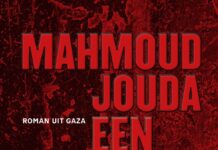Maureen Clare Murphy
The Electronic Intifada / 21 February 2020
The US has effectively denied entry to Eyal Weizman, founder of the research group Forensic Architecture.
Forensic Architecture, based in the UK, uses ground-breaking methodologies such as digital forensics and spatial analysis to expose human rights abuses. The group has published several investigations concerning Israeli violations against Palestinians.
Weizman, who holds Israeli and British passports, was due to travel to the US for Forensic Architecture’s first major survey in the country at Miami Dade College’s Museum of Art and Design. The exhibition, titled Forensic Architecture: True to Scale, opened on Thursday and runs through late September.
That exhibition includes new findings concerning the brutal beating of Faisal al-Natsheh in the West Bank city of Hebron in 2014. The investigation relies on a virtual reality model of the site of the assault and cross-referenced testimony from Dean Issacharoff, the soldier who beat al-Natsheh, as well as testimony from two witnesses.
Weizman had also intended to use his trip to the US to advance an investigation into a Florida detention center where migrant children are held in cruel conditions.
Two days before his scheduled departure, US authorities informed Weizman by email that his right to travel to the country under a visa waiver program had been revoked because an algorithm had identified a security threat.
When Weizman visited the US embassy in London to reapply for a visa, an official there asked him to provide detailed information about his travel over the past 15 years. He was also asked to name any of his contacts that could have triggered the algorithm, Weizman told media.
Weizman said that he refused to provide further information to the embassy because doing so “would be putting people at risk by reporting their names.”
Amnesty International condemned the effective barring of Weizman to the US, saying it “raised serious concerns about the practice of visa revocations based on problematic security algorithms.”
The rights group added that “Algorithms designed to predict so-called security risks could be used to arbitrarily flag certain groups, including human rights investigators, under a veneer of objectivity and accuracy.”
Ideological exclusion
Amnesty suggested that political bias may have informed the decision to bar Weizman from entering the US, noting a “long history” of ideological exclusion to keep Americans “from being exposed to dissident viewpoints.”
Last year the US barred entry to Omar Barghouti, a Palestinian human rights activist and co-founder of the boycott, divestment and sanctions movement.
The Trump administration has also revoked the visa of the chief prosecutor of the International Criminal Court over her thwarted efforts to pursue investigations of alleged war crimes perpetrated by American forces in Afghanistan.
Forensic Architecture’s investigation into the 2014 beating of a Palestinian in Hebron employs virtual modelling and cross-referenced testimony.
US officials have also threatened to impose sanctions or seek to criminally prosecute officials at the International Criminal Court if they pursue investigations into alleged war crimes committed by Israel.
Weizman serves on the Technology Advisory Board of the International Criminal Court.
From the very beginning, Weizman’s career has been dedicated to confronting injustice.
While a student at London’s Architectural Association, Weizman began mapping Israeli settlements in the West Bank, producing a study presented as evidence to the International Court of Justice.
Weizman founded Forensic Architecture at Goldsmiths, University of London, where he is a professor.
Exposing injustices
Forensic Architecture analysed multiple video and audio sources and employed computer modelling to pinpoint the Israeli Border Police officer who killed unarmed Palestinian teenager Nadim Siam Nuwara in May 2014.
The Border Police officer, Ben Dery, received a nine-month prison sentence over the 17-year-old’s killing – a lenient sentence but exceedingly rare conviction over the slaying of a Palestinian by Israeli occupation forces.
In partnership with the Israeli human rights group B’Tselem, Forensic Architecture revealed that Israel doctored footage in an attempt to cover up the killing of two boys in Gaza in 2017.
Analysis by the group also contradicted Israel’s claims that a Palestinian citizen of Israel was attempting to attack police with his car when officers shot him during a home demolition raid in the unrecognized village of Umm al-Hiran in 2017.
Yaqoub Abu al-Qiyan, a math teacher, bled to death after being shot and was branded as a terrorist by Israeli political leaders.
Forensic Architecture’s findings indicate that Abu al-Qiyan was driving slowly and his vehicle only accelerated after he was shot at by police, suggesting he had lost control of his car.
The research group’s investigation of weaponry used against protesters in Gaza contributed to the resignation of Warren B. Kanders, part-owner of US arms maker Sierra, from the board of the Whitney Museum of American Art last year.
Forensic Architecture withdrew from the New York City museum’s prestigious biennial before Kanders resigned as vice chair.
The group’s investigations have also focused on abuses within the US.
Forensic Architecture, in partnership with Invisible Institute, produced “one of the closest analyses of any police shooting ever done,” according to Weizman, concerning the 2018 death of Harith Augustus in Chicago.
Augustus, a barber, was stopped by police patrolling the South Shore neighbourhood of the city. According to Forensic Architecture, that encounter “began with Augustus fully cooperating, and ended with him shot five times, his firearms license in his hand, and his gun still clipped in its holster.”
The group’s investigation demonstrates how the Chicago Police Department immediately constructed the false narrative of an “armed confrontation” between officers and Augustus, a Black citizen.
Forensic Architecture also found that Chicago police “distorted known facts and selectively released the videos in their possession, in an effort to deflect the public outrage provoked by the incident.”
Maureen Clare Murphy is an associate editor of The Electronic Intifada and lives in Chicago





![vrijdag 17 mei in Amsterdam: in gesprek [videoverbinding] met Palestijnse arts Ghassan Abu-Sittah](https://palestina-komitee.nl/wp-content/uploads/2024/04/abu-Sittha-1-1-218x150.png)







